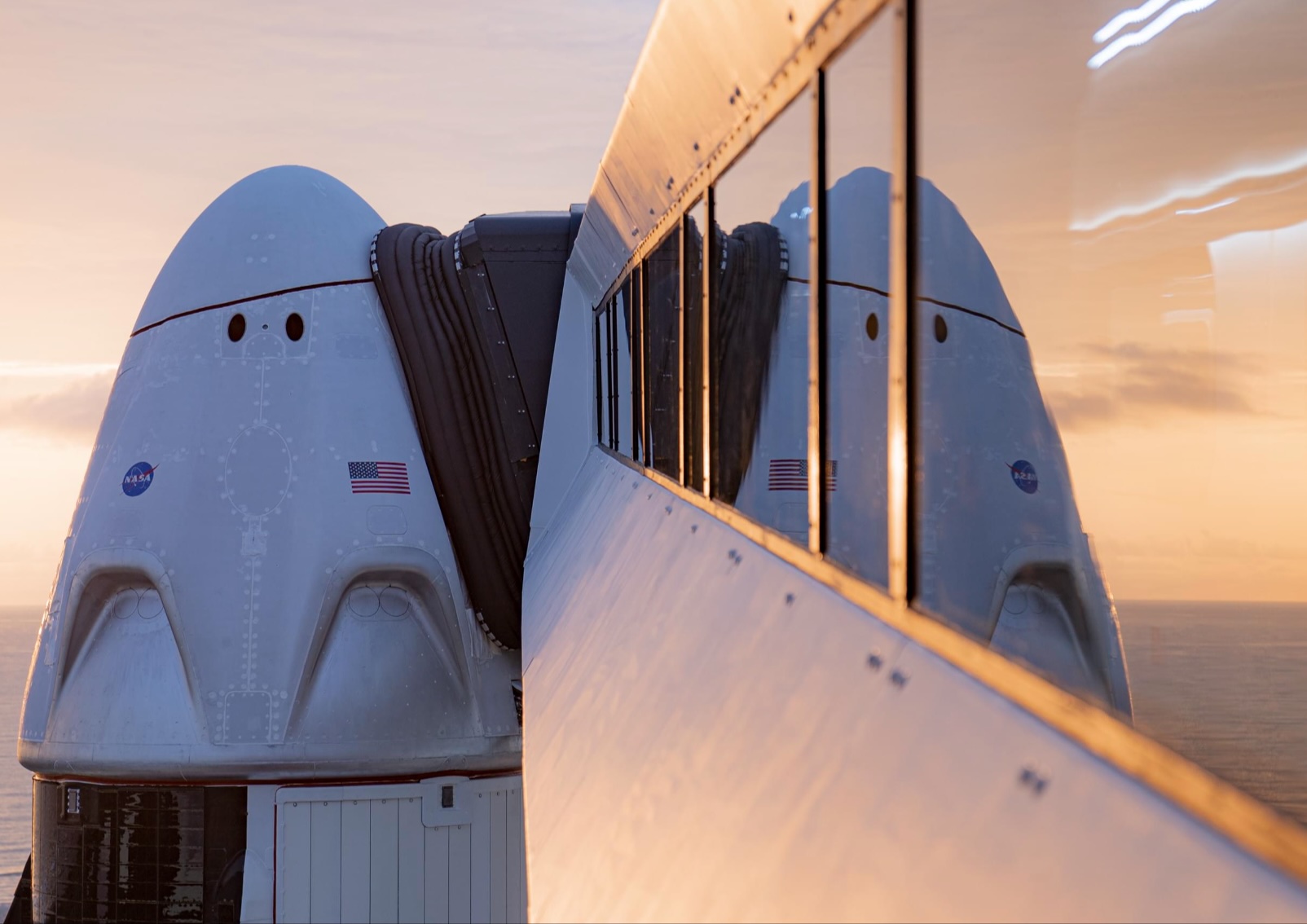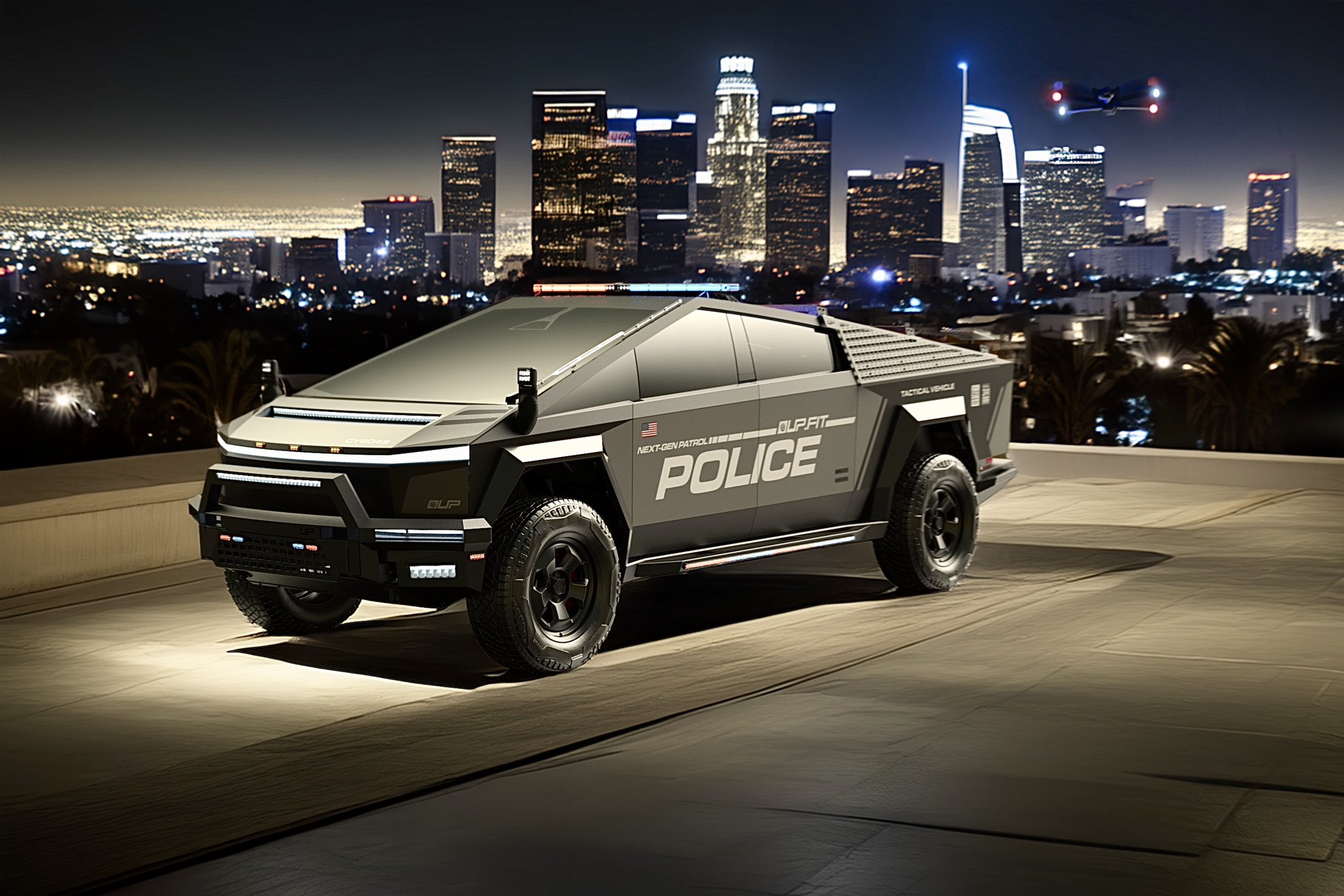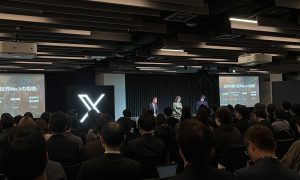News
SpaceX Starship destroyed during cryo test but the next ship is already on the way
SpaceX’s third full-scale Starship prototype has followed a little too closely in the footsteps of its predecessors, suffering a catastrophic failure during its first cryogenic test.
On April 2nd, SpaceX successfully put Starship SN3 through an ambient temperature pressure, allowing the ship to take its first breaths and ensuring that no leaks were present in its massive propellant tanks. Just a handful of hours later, Starship SN3 began its first attempted cryogenic proof test. Neutral liquid nitrogen was loaded into the ship’s liquid oxygen (LOX) tank for a brief period before SpaceX aborted the test due to frozen valves in the ground support equipment (GSE) tasked with feeding the rocket — confirmed by CEO Elon Musk around 7:30 pm PDT.
Around six hours after the first attempt, SpaceX presumably managed to alleviate GSE valve issues and began Starship SN3’s second attempted cryogenic proof test around 11pm local (04:00 UTC). While things started out somewhat normally, they did not end well for the rocket prototype.

For unknown reasons, SpaceX began the second cryo test attempt by only loading Starship’s upper (LOX) tank with supercool liquid nitrogen. Given that Starship is constructed out of stainless steel sheets only slightly thicker than two US quarters, the lower (methane) tank would have almost certainly had to be pressurized, too, likely relying on gaseous (ambient temperature) nitrogen. Already, for a rocket built out of near-continuous metal, that temperature differential could pose a major problem.
Still, for the better part of three hours, things seemed to go exactly as planned, with the rocket venting dozens of times and the upper tank visibly developing a coating of frost as it began to freeze the water vapor right out of the humid Texas air. Alas, around 2:07am local (07:07 UTC), things took a turn for the worse. The unfilled methane tank below the now-LN2-laden LOX tank appeared to crumple, beginning at a small dent that appeared over the course of the test. Gravity took over a few seconds later, further crumpling the methane tank and causing the top-heavy rocket to tip over and the LOX tank to burst.
While admittedly from the armchair, not a lot of this particular failure makes sense. If the bottom methane tank were significantly pressurized with gaseous nitrogen, a rapid loss of structural integrity would have likely been a far more violent ordeal as the gas attempted to escape. Instead, the failure was – relative to the possibilities – extremely gradual. In fact, it almost appeared as if the bottom methane tank was either never actually pressurized or not pressurized nearly enough to withstand the weight of several hundred tons of liquid nitrogen. Given SpaceX’s expertise and familiarity with rocketry, that option thankfully seems vanishingly unlikely.
All other possible explanations are at least as hard to parse, leaving it up to SpaceX or CEO Elon Musk to clarify what transpired if they choose to do so.


On a more positive note, SpaceX has continued to churn out steel rings and bulkheads and assemble them into sections of Starship SN4 – the rocket’s next full-scale prototype – for the last two or so weeks. If Starship SN1, SN2, and SN3 are anything to go by, the fourth full-scale Starship prototype could be ready to head to the pad for testing just a handful of weeks from now, picking up where Starship SN3 left off. Thankfully, the latter rocket’s April 3rd failure appears to have been relatively benign as far as pad hardware goes, likely requiring minimal repair work to be ready for its next test campaign.
While unfortunate, it’s critical to remember that this is all part of SpaceX’s approach to developing new and unprecedented technologies. Be it Falcon 1, Falcon 9 booster recovery, or Falcon 9 fairing recovery, all groundbreaking SpaceX efforts have begun with several consecutive failures before the first successes – and the first streaks of consecutive successes. Given Musk’s September 2019 claim that SpaceX is putting just ~5% of its resources into Starship, prototypes like Mk1, SN1, and SN3 are being fabricated for pennies on the dollar.
As a schedule setback, SpaceX is building ships so quickly that any single prototype failure shouldn’t cause more than a handful of weeks of delays, and the goal is to produce an entire Starship every week by the end of 2020. For now, SpaceX will hopefully learn from each failure during developmental testing and roll those lessons learned into each future prototype.
News
SpaceX’s Crew-11 mission targets July 31 launch amid tight ISS schedule
The flight will lift off from Launch Complex 39A at Kennedy Space Center in Florida.

NASA and SpaceX are targeting July 31 for the launch of Crew-11, the next crewed mission to the International Space Station (ISS). The flight will lift off from Launch Complex 39A at Kennedy Space Center in Florida, using the Crew Dragon Endeavour and a Falcon 9 booster.
Crew Dragon Endeavour returns
Crew-11 will be the sixth flight for Endeavour, making it SpaceX’s most experienced crew vehicle to date. According to SpaceX’s director of Dragon mission management, Sarah Walker, Endeavour has already carried 18 astronauts representing eight countries since its first mission with NASA’s Bob Behnken and Doug Hurley in 2020, as noted in an MSN report.
“This Dragon spacecraft has successfully flown 18 crew members representing eight countries to space already, starting with (NASA astronauts) Bob (Behnken) and Doug (Hurley) in 2020, when it returned human spaceflight capabilities to the United States for the first time since the shuttle retired in July of 2011,” Walker said.
For this mission, Endeavour will debut SpaceX’s upgraded drogue 3.1 parachutes, designed to further enhance reentry safety. The parachutes are part of SpaceX’s ongoing improvements to its human-rated spacecraft, and Crew-11 will serve as their first operational test.
The Falcon 9 booster supporting this launch is core B1094, which has launched in two previous Starlink missions, as well as the private Ax-4 mission on June 25, as noted in a Space.com report.
The four-members of Crew-11 are NASA astronauts Zena Cardman and Mike Fincke, as well as Japan’s Kimiya Yui and Russia’s Oleg Platonov.
Tight launch timing
Crew-11 is slated to arrive at the ISS just as NASA coordinates a sequence of missions, including the departure of Crew-10 and the arrival of SpaceX’s CRS-33 mission. NASA’s Bill Spetch emphasized the need for careful planning amid limited launch resources, noting the importance of maintaining station altitude and resupply cadence.
“Providing multiple methods for us to maintain the station altitude is critically important as we continue to operate and get the most use out of our limited launch resources that we do have. We’re really looking forward to demonstrating that capability with (CRS-33) showing up after we get through the Crew-11 and Crew-10 handover,” Spetch stated.
Lifestyle
EV fans urge Tesla to acquire Unplugged Performance for edge in fleet and security industry
Unplugged Performance has built a name for itself by producing performance upgrades for Tesla vehicles.

A growing number of Tesla enthusiasts and longtime community voices are calling on the electric vehicle maker to acquire Unplugged Performance, a California-based aftermarket company best known for tuning Tesla vehicles and developing specialized government fleet solutions under its UP.FIT division.
The idea was once considered a niche proposal among EV fans, but it is now gaining serious attention not just as a performance play but as a strategic move to deepen Tesla’s roots in the fleet and security industry.
A strategic fit
Unplugged Performance has built a name for itself by producing performance upgrades for Tesla vehicles, from track-optimized components to visual and aerodynamic upgrades. But in recent years, its UP.FIT division has pivoted toward a more functional future by outfitting Tesla vehicles like Model Ys for police, military, and government use.
That work has sparked growing calls for closer collaboration with Tesla, especially as the EV maker increasingly leans into autonomy, AI, and fleet services as core components of its next chapter.
“I posted this four years ago, but I think it’s more true now than ever,” wrote Whole Mars Catalog, a well-known Tesla investor and FSD Beta tester, on X. “Tesla should buy Unplugged. But not just as a Performance division. What they are doing with UP.FIT unlocks large government and commercial fleet purchases that can improve utilization.”
Tesla fans such as shareholder Sawyer Merritt echoed the sentiment, calling Unplugged a “great fit within Tesla.” adding, “They are literally located directly next to Tesla’s design studio in Hawthorne.”
Enabling the next wave
Supporters of the idea noted that integrating Unplugged into Tesla’s corporate structure could help accelerate the adoption of autonomous technologies in government sectors. With UP.FIT patrol cars already in use across some U.S. police departments, Tesla fans envisioned a future where self-driving Teslas could potentially revolutionize law enforcement, search-and-rescue, and public service logistics.
“Just imagine how autonomous patrol cars could transform policing and bring us into a safer future,” the veteran FSD tester wrote.
The benefits could also extend to Tesla’s existing consumer base. “They also have some incredible products in the works that I think will appeal to many ordinary Tesla drivers — not just those looking for performance or mods. Stuff that’s so good it should have come straight from the design studio next door,” Whole Mars Catalog noted.
Unplugged Performance, founded in 2013, shares not just a product vision with Tesla, but also geography. Its Hawthorne headquarters sits directly adjacent to Tesla’s design studio, and the two companies have maintained a close working relationship over the years. The aftermarket firm has long positioned itself as a “mission-aligned” partner to Tesla.
In response to the recent calls for acquisition, Unplugged Performance acknowledged the support from the community. “Our very existence is to support the Tesla mission with @UpfitTesla and @UnpluggedTesla,” Unplugged CEO Ben Schaffer posted on X. “We love working with Tesla and are grateful for the community’s support since 2013!”
News
Tesla debuts hands-free Grok AI with update 2025.26: What you need to know
All new Tesla vehicles delivered on or after July 12, 2025, will include Grok AI out of the box

Tesla has begun rolling out Grok, an in-car conversational AI assistant developed by xAI, to eligible vehicles starting July 12. The feature marks the most direct integration yet between Elon Musk’s artificial intelligence startup and Tesla’s consumer product lineup, offering drivers hands-free access to a chat-style companion while on the road.
Grok comes pre-installed on new vehicles
According to Tesla’s FAQ page for the feature, all new vehicles delivered on or after July 12, 2025, will include Grok AI out of the box. Owners of older vehicles may gain access through an over-the-air update, provided their vehicle meets a few hardware and software requirements.
Specifically, Grok is currently only supported on Tesla models equipped with an AMD infotainment processor and running vehicle software version 2025.26 and higher. Compatible models include the Model S, Model 3, Model X, Model Y, and Cybertruck. A Premium Connectivity subscription or active Wi-Fi connection is also required.
Tesla notes that additional vehicle compatibility may arrive in future software updates.
Grok’s features and limitations for now
Drivers can engage with Grok using the App Launcher or by pressing and holding the voice command button on the steering wheel. Grok is designed to answer questions and hold conversations using natural language, offering responses tailored to its chosen personality—ranging from “Storyteller” to the more eccentric “Unhinged.”
For fun, Tesla posted a demonstration of Grok likely running on “Unhinged” talking about what it would do to Optimus when they are on a date, much to the shock of the humanoid robot’s official social media account.
It should be noted, however, that Grok cannot currently issue commands to the vehicle itself, at least for now. Traditional voice commands for tasks like climate control, navigation, or media remain separate from Grok as of writing.
The feature is being released in Beta and does not require a Grok account or xAI subscription to activate, although that policy may change over time.
Grok privacy and in-car experience
Tesla emphasizes that interactions with Grok are securely processed by xAI and not linked to a user’s Tesla account or vehicle. Conversations remain anonymous unless a user signs into Grok separately to sync their history across devices.
Tesla has also begun promoting Grok directly on its official vehicle webpages, showcasing the feature as part of its in-car experience, further highlighting the company’s increasing focus on AI and infotainment features on its all-electric vehicles.
-

 Elon Musk2 weeks ago
Elon Musk2 weeks agoTesla investors will be shocked by Jim Cramer’s latest assessment
-

 Elon Musk3 days ago
Elon Musk3 days agoxAI launches Grok 4 with new $300/month SuperGrok Heavy subscription
-

 Elon Musk5 days ago
Elon Musk5 days agoElon Musk confirms Grok 4 launch on July 9 with livestream event
-

 News1 week ago
News1 week agoTesla Model 3 ranks as the safest new car in Europe for 2025, per Euro NCAP tests
-

 Elon Musk1 week ago
Elon Musk1 week agoxAI’s Memphis data center receives air permit despite community criticism
-

 News2 weeks ago
News2 weeks agoXiaomi CEO congratulates Tesla on first FSD delivery: “We have to continue learning!”
-

 News2 weeks ago
News2 weeks agoTesla sees explosive sales growth in UK, Spain, and Netherlands in June
-

 Elon Musk2 weeks ago
Elon Musk2 weeks agoTesla scrambles after Musk sidekick exit, CEO takes over sales














